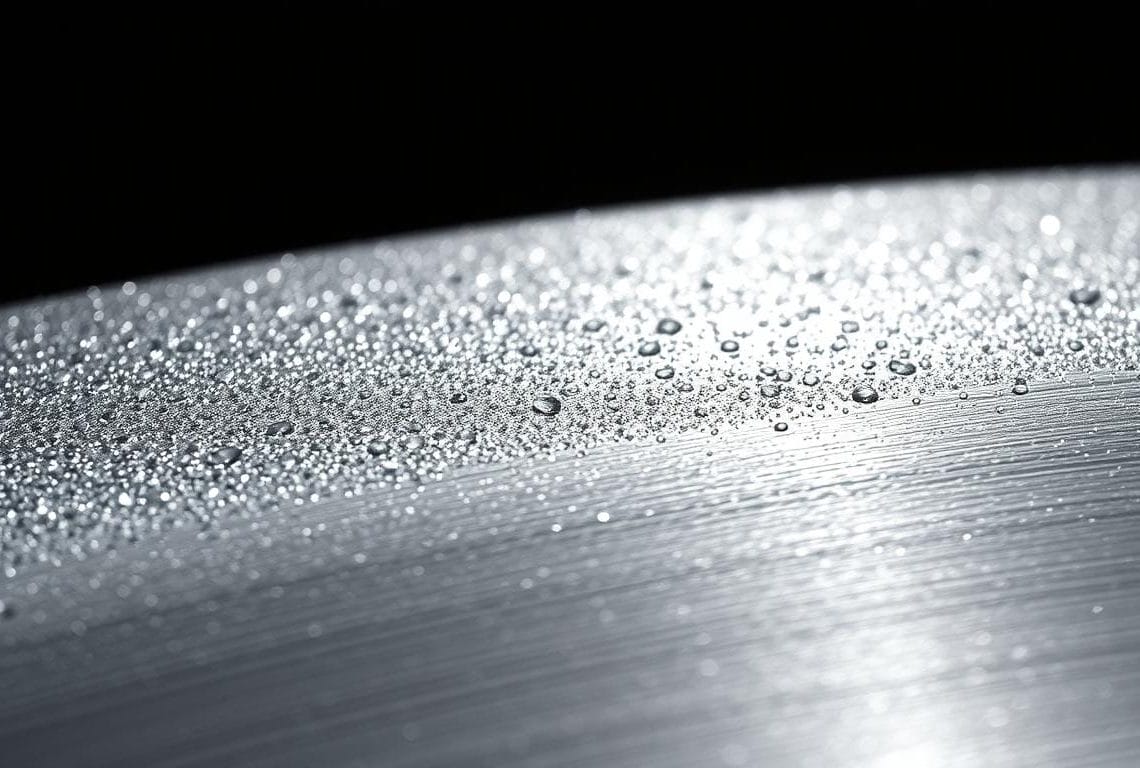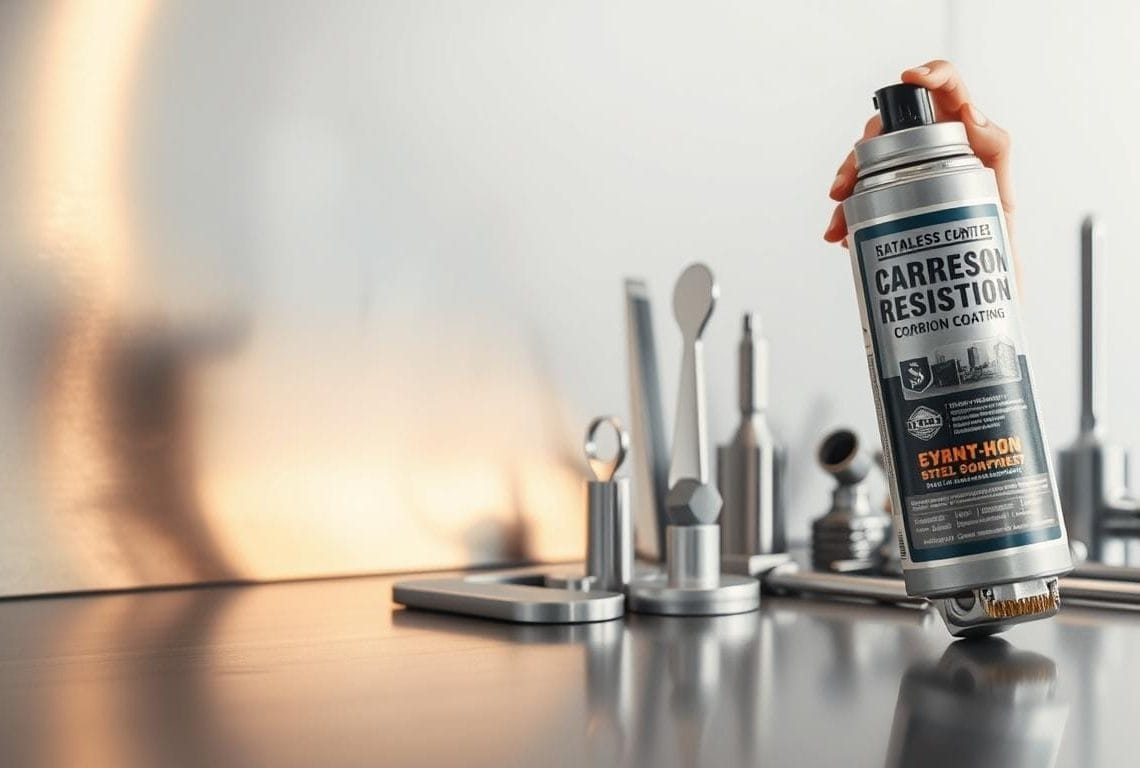Can a material famed for lasting shine ever show brown stains and fail its promise?
Stainless steel is an iron-based alloy used in cars, kitchens, medical gear, and many household products. It resists attack because chromium forms a thin, protective film that fights corrosion.
Still, under harsh conditions—salts, grease contamination, strong chemicals, or long heat exposure—this alloy can suffer oxidation. The chemical reaction turns iron into hydrated iron oxide, a visible result that homeowners and metal workers notice.
Grade choice, workmanship, and surface finish shape performance. Some types handle pools and coastal air better than others. Simple steps—coatings, inhibitors, and timely cleaning—help prevent and reverse minor damage.
For a practical guide on when corrosion becomes a problem and how to fix it, see the detailed resource at can stainless alloys corrode?
Do stainless steel rust? The short answer and why the myth persists
Yes—this alloy can corrode, but in normal household air and water it usually resists damage very well.
“Stainless” led consumers to believe the material is immune. In reality, the name means it stains less than carbon or other common steels. The protective behavior is a quantitative feature — it has limits based on alloy mix, finish, and workmanship.
The passive chromium oxide film blocks oxygen and keeps corrosion at bay in benign settings. When salts, low pH, or trapped deposits break that film, the chemical reaction with water and oxygen produces a visible result.
- Compared with other metals and products, this alloy offers superior corrosion resistance when correctly specified.
- Most on-site corrosion cases trace to the environment or contamination, not the base material alone.
- Workmanship and maintenance matter: embedded iron particles, poor cleaning, and residues speed deterioration.
Quick checks for homeowners and shop owners: note the location, check for chlorides near pools or coastlines, and inspect for early tea-staining or discoloration. The next sections explain the passive film, environments that defeat it, and practical steps to protect installed items.
What makes stainless steel resistant to corrosion under normal conditions
A microscopic film of chromium oxide is the unseen guardian that keeps corrosion from starting on many iron-based alloys.
The passive layer is only a few atoms thick, yet it blocks oxygen from reaching the metal underneath. When scratched lightly, the film re-forms quickly if oxygen is present. This self-repair process is the core reason for strong corrosion resistance in everyday settings.
The alloy mix controls performance. Typical compositions hold 12–20% chromium plus small amounts of nickel, molybdenum, nitrogen, and carbon. Higher chromium and added molybdenum improve pitting resistance in chloride-rich air and water.

Common grades: 304 is the baseline for indoor use; 316 adds molybdenum for better chloride resistance; specialty higher-alloy types suit industrial or coastal exposure. Still, limits exist: heavy saline, aggressive chemicals, trapped grease, or prolonged heat can overwhelm the film and permit localized corrosion.
- Fabrication matters: welding can change the surface and slow self-repair unless cleaned and repassivated.
- Protection options: barrier coatings, sealants, and inhibitors add redundancy where maintenance is infrequent.
- Selection tip: match grade to chloride exposure, temperature, and cleaning plans to keep the surface passive in service.
Where and why stainless steel rusts: environments and corrosion mechanisms
Corrosion appears where chloride-rich water, tight gaps, or mixed metals create local attack sites.
Pitting corrosion in chlorides and stagnant water
Chloride ions can breach the protective layer and start pitting corrosion. These are deep, narrow pits common near coasts, pools, and along roads treated with deicing salt.
Low flow or trapped moisture worsens this. Stagnant water reduces oxygen, so passivity fails and under-deposit attack follows.
Crevice corrosion in low-oxygen gaps and deposits
Crevices under washers, gaskets, or foul deposits let chlorides concentrate. Design out tight joints and keep interfaces clean to cut risk.
Bimetallic and galvanic behavior with dissimilar metals
When dissimilar metals share an electrolyte, a cell forms. That accelerates attack on the less noble surface. Isolate joints and use insulating washers to limit currents.
Stress cracking, acid attack, and intergranular issues from heat
Tensile stress plus chlorides can cause stress corrosion cracking in some alloys. Very low pH liquids (pH < 1) produce broad corrosion. Heating austenitic stainless at 450–850°C may cause intergranular attack unless stabilized or properly treated.

- Watch edges, welds, fasteners, and shielded spots during inspection.
- Avoid carbon steel contamination from grinding dust—clean thoroughly after fabrication.
- Choose compatible alloys and design for drainage and ventilation.
How to prevent stainless steel rust: smart choices and protective measures
Start by matching material grade to the environment—this limits many common failures.
Selecting the right type and grade for the environment
Selection matters. Choose a grade stainless for expected exposure: 304 for indoor, low-chloride settings; 316 where salts or deicing chemicals appear; and higher-alloy types for coastal or chemical process sites.
Match corrosion resistance to service conditions—salt spray, temperature, cleaning agents, and standing moisture all influence the grade stainless steel choice.

Coatings, corrosion inhibitors, and maintenance to protect the surface
Protective barriers add redundancy. Apply polyurethane top coats, sealants, or epoxy on cut edges and field-fabricated sheet metal to reduce exposure.
Routine care helps: use corrosion inhibitor sprays seasonally, rinse coastal installations, remove deposits promptly, and avoid abrasive carbon-rich tools in the process.
- Design: eliminate crevices, ensure drainage, and allow ventilation to keep the passive layer active.
- Fasteners: use compatible metals or insulating washers to prevent galvanic currents between different metals.
- Workmanship: smooth welds and proper passivation improve long-term properties and surface resistance.
For design tips that reduce stress-related attack, consult guidance on how to prevent stress corrosion cracking.
Removing rust and restoring protection on stainless steel, today
Effective restoration follows a clear diagnosis, then a graded repair—from mild household treatments to industrial cleaning.
First, confirm the brown staining is active corrosion and not a surface deposit or carbon transfer. Document locations and nearby dissimilar metals.
For light marks, try vinegar plus baking soda or lemon with salt, rinse with clean water, and dry so the protective layer can reform. For moderate staining, test store products such as Iron OUT, CLR, or WD-40 Rust Remover on a hidden spot and follow label steps.
Heavy scale needs mechanical or chemical methods — wire brushing, sandblasting, or chemical soaking — followed by thorough cleaning and repassivation. Electrochemical weld cleaning removes heat tint and repassivates faster than harsh acids.
Monitor treated areas, break galvanic paths, and protect exposed edges with coatings. For more on long-term behavior, see will stainless steel rust?






